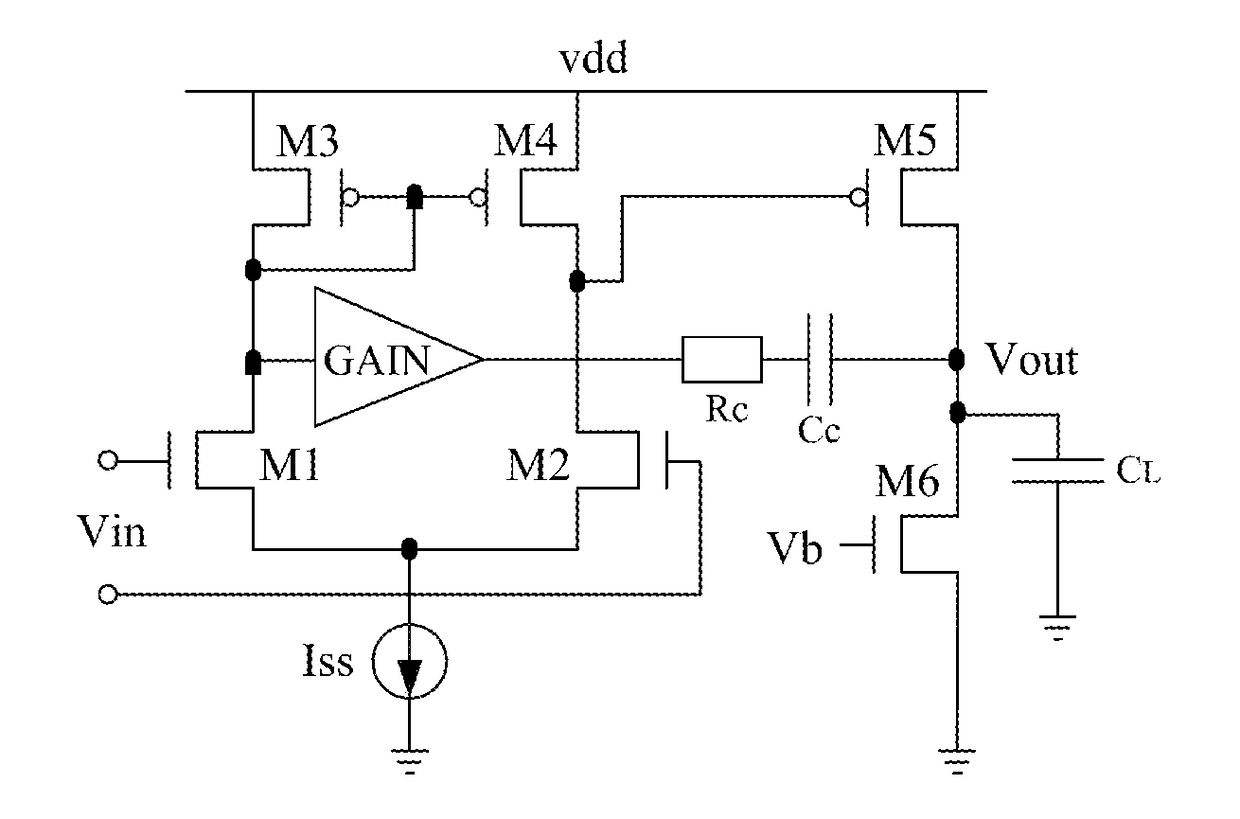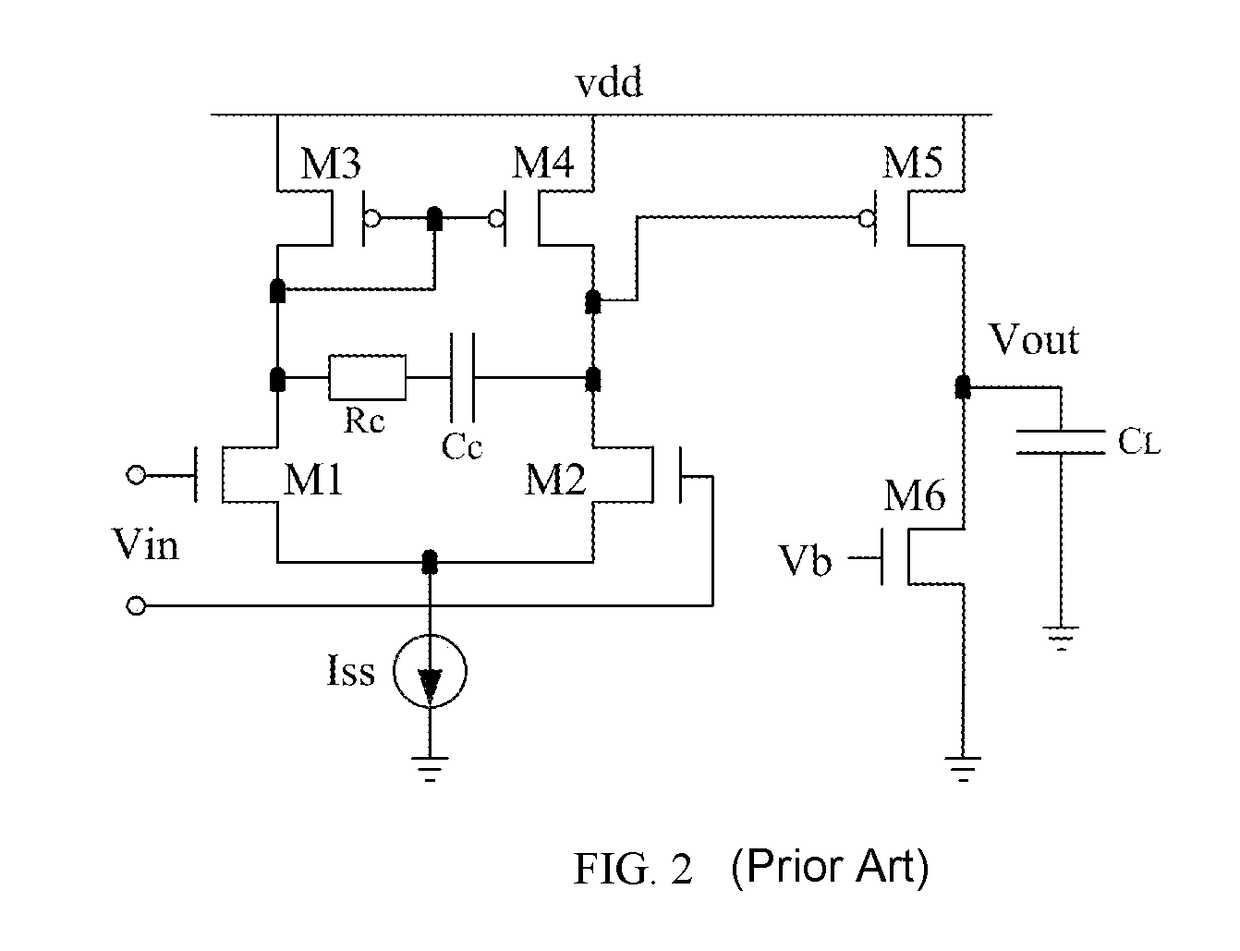Frequency-compensated transconductance amplifier
a transconductance amplifier and frequency compensation technology, applied in the direction of dc-amplifiers with dc-coupled stages, amplifiers with semiconductor devices/discharge tubes, and different amplifiers, can solve the problems of reducing the unity-gain bandwidth of the transconductance amplifier is reduced, and the compensation effect is limited
- Summary
- Abstract
- Description
- Claims
- Application Information
AI Technical Summary
Benefits of technology
Problems solved by technology
Method used
Image
Examples
Embodiment Construction
[0030]For a better understanding of the implemented technical means, inventive features, and achieved objects and effects of the present invention, the present invention will be further illustrated below in combination with specific drawings.
[0031]Referring to FIG. 4, the present invention provides a frequency-compensated transconductance amplifier. The frequency-compensated transconductance amplifier includes an input stage of the transconductance amplifier, a first-stage active load of the transconductance amplifier, a first-stage tail current source of the transconductance amplifier, a second-stage input transistor of the transconductance amplifier, a load capacitor of the transconductance amplifier, and a frequency compensation network of the transconductance amplifier. The input stage of the transconductance amplifier is consisting of NMOS transistors M1 and M2. The first-stage active load of the transconductance amplifier is consisting of PMOS transistors M3 and M4. The first-...
PUM
 Login to View More
Login to View More Abstract
Description
Claims
Application Information
 Login to View More
Login to View More - R&D
- Intellectual Property
- Life Sciences
- Materials
- Tech Scout
- Unparalleled Data Quality
- Higher Quality Content
- 60% Fewer Hallucinations
Browse by: Latest US Patents, China's latest patents, Technical Efficacy Thesaurus, Application Domain, Technology Topic, Popular Technical Reports.
© 2025 PatSnap. All rights reserved.Legal|Privacy policy|Modern Slavery Act Transparency Statement|Sitemap|About US| Contact US: help@patsnap.com



